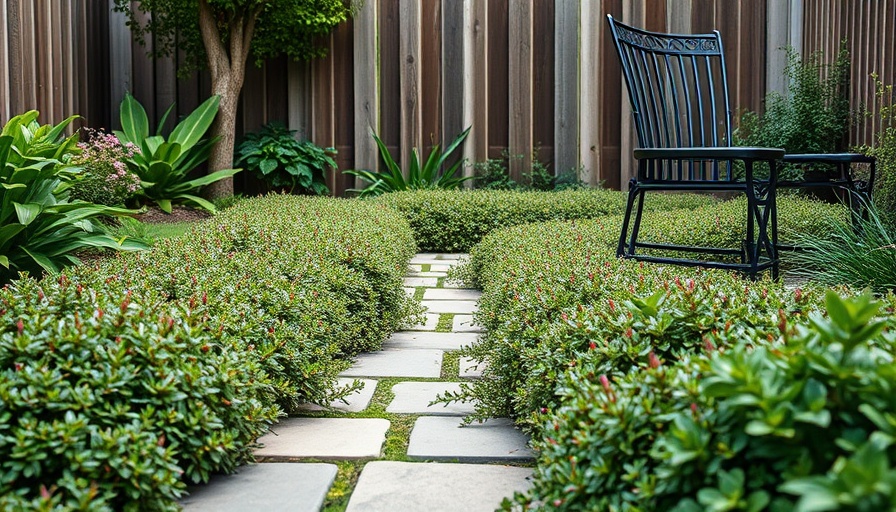
Discovering No-Mow Lawn Alternatives for Your Garden
Are you tired of the endless cycle of mowing, watering, and repairing your lawn? Many homeowners today are seeking greener alternatives that not only beautify their spaces but also reduce maintenance efforts. With growing concerns over water conservation and the ecological impact of traditional lawns, no-mow garden options have emerged as viable solutions for practical and aesthetically pleasing outdoor spaces.
Searching for Eco-Friendly Lawn Replacements
As society becomes more environmentally conscious, many are looking towards sustainable practices that suit their modern lifestyles. Alternatives to traditional lawns minimize water usage, require less upkeep, and often support local biodiversity. In this exploration, we delve into several no-mow lawn options that are not only beautiful but also beneficial for the environment.
1. Creeping Thyme: A Vibrant Ground Cover
Creeping thyme is an attractive herb that forms a lush, low-growing carpet of greenery. It’s especially suitable for sunny spots and creates delightful pink or purple flowers during the summer. This hardy plant thrives on neglect, requiring minimal watering once established, making creeping thyme a perfect choice for those who prefer a vibrant garden without extensive maintenance.
2. Microclover: Kid-Friendly and Soft
Microclover stands out as an ideal alternative for families. This compact type of clover remains green year-round and is exceptionally resilient under foot traffic. Moreover, it naturally enriches soil nitrogen levels, promoting overall soil health. Anyone seeking a child-friendly space should consider this soft and robust option that resembles a traditional lawn without the labor.
3. Corsican Mint: A Fragrant Ground Cover
For shadier areas, Corsican mint offers a lush, aromatic ground cover. When stepped on, it produces an invigorating scent that enhances garden pathways. Preferring moist and dappled light, this plant thrives in less sunny spots and is a unique choice for those looking to add character to their garden.
4. Wildflower Meadows: Nature's Canvas
Transforming a typical lawn into a wildflower meadow not only enhances the visual appeal of your garden but also supports pollinators such as bees and butterflies. By planting native wildflowers, homeowners can enjoy a vibrant tapestry of color and life throughout the seasons. Although it requires some initial planning, a wildflower meadow offers a low-maintenance ecosystem that brings joy and beauty.
5. Ornamental Grasses: Height and Texture
Ornamental grasses, like blue fescue and fountain grass, add height and visual interest to gardens. These plants are particularly appealing because they thrive in various conditions with minimal care. Their graceful movement in the wind brings an artistic touch to the landscape while providing year-round structure.
6. Embracing Artificial Grass: The No-Fuss Solution
Modern advancements in artificial grass have revolutionized the concept of no-mow alternatives. Today’s synthetic turf mimics the look and feel of real grass while offering unparalleled durability and drainage. This low-switch option is an excellent choice for busy families, offering a safe and high-quality play area for kids and pets without the worry of upkeep.
7. Low-Maintenance Hardscaping with Gravel and Stone
Replacing large lawn sections with gravel or stone is another smart solution that combines functionality and style. A well-designed gravel pathway or patio not only minimizes maintenance but also enhances visual appeal. This can create serene spaces in gardens where homeowners can relax and enjoy nature without the hassle of lawn care.
8. Future Trends in Landscaping: Emphasizing Sustainability
The trend towards sustainable landscaping solutions reflects broader environmental awareness in society. As homeowners embrace eco-friendly design, the demand for no-mow lawn alternatives is expected to grow. New technologies, such as precision irrigation and soil health monitoring, can complement these alternatives, ensuring gardens remain lush while conserving resources.
Exploring Your Options for a Sustainable Garden
With numerous no-mow lawn alternatives to choose from, homeowners have access to a wide variety of plants and solutions suited to their specific needs. Whether you prioritize eco-friendliness, aesthetic appeal, or simply seek less time-consuming landscaping, these options provide a pathway to a beautiful and sustainable garden. By making informed decisions, you can cultivate an outdoor haven that reflects your values while easing your everyday responsibilities.
Consider integrating one or several of these no-mow alternatives into your garden design. The result will be a thriving green space that is both low-maintenance and visually stunning, ultimately allowing you to enjoy your outdoor environment with less effort.
Start revitalizing your garden with these innovative options and enjoy a serene outdoor space tailored to your lifestyle.
 Add Row
Add Row  Add
Add 




 Add Row
Add Row  Add
Add 

Write A Comment